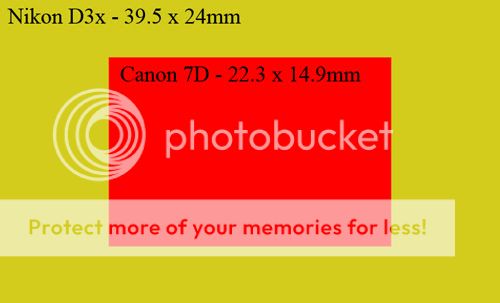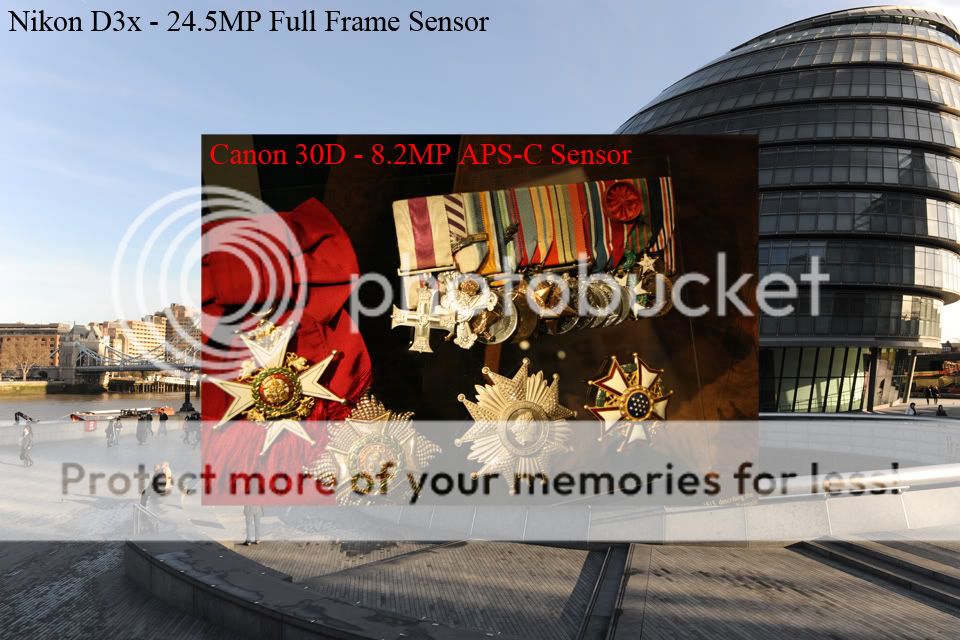Neil S.
TPF Noob!
- Joined
- Jul 16, 2010
- Messages
- 1,128
- Reaction score
- 21
- Location
- Japan
- Can others edit my Photos
- Photos NOT OK to edit
DSLR Sensors - A Guide
I put this guide together in the hopes that it will serve to answer many of the common questions that people have about DSLR Sensors.
Part I: What is a DSLR Sensor exactly?
- The sensor basically just records the light coming through the lens, and converts it into electrical signals that the camera then processes into image data.
- The type that is used in modern DSLRs is the Complementary Metal Oxide Semiconductor or CMOS sensor.
- These sensors contain millions of individual sensor elements that combine to form a sensor array.
- A sensor has both a physical size, and a number of sensor elements that determine its Megapixel count.
- Wikipedia: “An Image Sensor is a device that converts an optical image to an electric signal. It is used mostly in digital cameras and other imaging devices. Early sensors were video camera tubes but a modern one is typically a charge-coupled device (CCD) or a complementary metal–oxide–semiconductor (CMOS) active-pixel sensor.”
This is a picture of the Canon EOS 5D mk II sensor:

Notes: *A DSLR sensor is a precision surface that is very delicate, and great care needs to be taken not to damage it. *Never touch the surface of it with anything, unless you are cleaning it. *If you do decide to clean your sensor, I recommend doing research about the process first to ensure that you do not damage it.
Part II: Sensor Sizes
- There are 4 main sizes of sensors used in modern DSLRs are: Full Frame, APS-C, APS-H, and the 4/3 system.
- Larger sensors usually provide superior image quality compared to smaller ones.
- The size determines the amount of light that can be recorded by the sensor, and this has an effect on the ability of the DSLR to produce low noise images.
- When using APS-C, APS-H, or 4/3 sized sensors there is a crop factor invloved that changes the field of view percieved by the sensor. This results in a longer equivelant focal length of the attached lens.
- For example the Canon EF 70-200mm 2.8L IS II lens on the Canon 7D body becomes a 112-320mm equivalent lens, because of the 1.6x crop factor used by Canon for their APS-C sensors.
Full Frame:
- The largest of the four common types.
- Some examples of cameras that use this size of sensor are the Nikon D3x, and Canon 5D mk II.
- Wikipedia: “A Full-Frame digital SLR is a digital single-lens reflex camera (DSLR) fitted with an image sensor that is the same size as a 35 mm (36×24 mm) film frame.”
- Full Frame sensors do not use a crop factor for lens focal length, and what you see is what you get with them.
APS-C:
- Some examples of cameras that use this size sensor are the, Canon 60D, Nikon D7000, Canon 7D, and the Nikon D300s.
- Wikipedia: “Advanced Photo System type-C (APS-C) is an image sensor format approximately equivalent in size to the Advanced Photo System "classic" size negatives. These negatives were 25.1 × 16.7 mm and had an aspect ratio 3:2.”
- Canon uses a crop factor of 1.6x, and Nikon uses a crop factor of 1.5x for their respective APS-C sensors that must be used to determine the focal length equivalent for the lens you are using.
APS-H:
- APS-H sensors are larger than APS-C sensors, but smaller than Full Frame sensors.
- This size sensor is used in the Canon 1D line.
- Canon uses a crop factor of 1.3x for their APS-H size sensors.
4/3:
- Olympus digital SLR cameras use what's called a 4/3 system, and this describes both the sensor (it is neither a CCD nor a CMOS sensor) as well as the connection from camera to lens (called the lens mount).
- Olympus uses a crop factor of 2.0x for their 4/3 system that must be used to determine the focal length equivalent for the lens you are using.
Here is a graphic showing the difference in physical size between a Nikon D3x (Full Frame) and a Canon 7D (APS-C) sensor:

Part III: Megapixels
- The number of single sensor elements that make up the sensor array (DSLR Sensor) determines it's Megapixel count.
- The more Megapixels that a sensor has, the higher the resolution of the digital image that the camera produces.
- Wikipedia: “Megapixel (MP or Mpx) is one million pixels, and is a term used not only for the number of pixels in an image, but also to express the number of image sensor elements of digital cameras or the number of display elements of digital displays.”
- More Megapixels does not necessarily make a DSLR better, but it does mean that it produces higher resolution images.
- Some benefits of higher resolution images are the ability to produce larger size prints, and crop the image down tighter while still maintaining usable image detail.
Here is an image showing the difference in image resolution between the Nikon D3x and the Canon 30D:

Note: The difference in resolution is most obvious when zooming in on the image, and the larger the resolution the farther you can "zoom in" while still having good detail.
Part IV: Noise
- Image noise is the degradation of image quality as a result of an increased ISO sensitivity.
- Increased ISO brings with it the ability to gather more light, but the result is increased image noise.
- Wikipedia: "Image noise is the random variation of brightness or color information in images produced by the sensor and circuitry of a scanner or digital camera. Image noise can also originate in film grain and in the unavoidable shot noise of an ideal photon detector."
- Full Frame sensors generally show less noise compared to smaller sensors, because of their ability to gather light more efficiently.
Here is an example of the difference in image quality of the Canon 440D based on the use of low and high ISO sensitivities (100 and 1600):
ISO-100


ISO-1600


Note: It is possible to apply noise reduction during post-processing in an attempt to retain more image detail.
Last edited:












